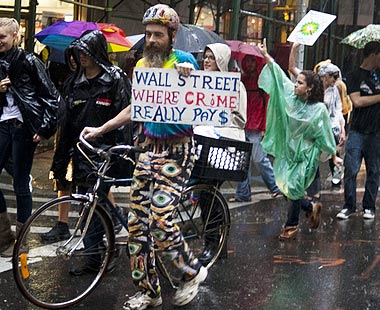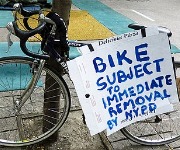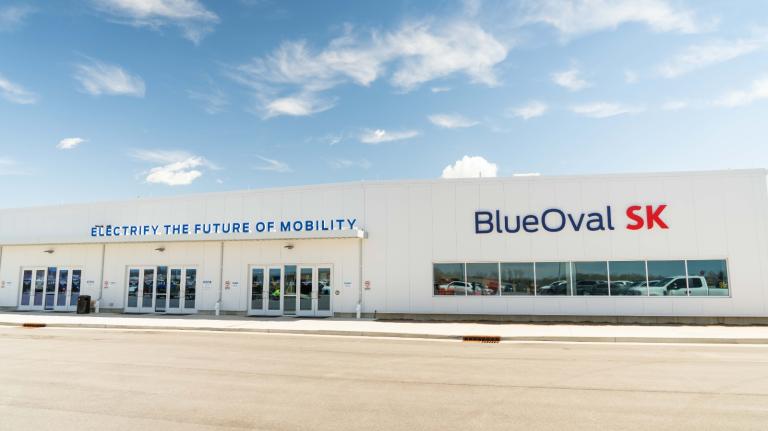 Bikes can be effective tools in protests.Photo: Dan NguyenRecent weeks have seen the massive, multi-day protests spread from the original Occupy Wall Street encampment in downtown Manhattan to Boston, Chicago, Denver, and many other cities. But largely lost amid the headlines last Friday was another, related demonstration.
Bikes can be effective tools in protests.Photo: Dan NguyenRecent weeks have seen the massive, multi-day protests spread from the original Occupy Wall Street encampment in downtown Manhattan to Boston, Chicago, Denver, and many other cities. But largely lost amid the headlines last Friday was another, related demonstration.
Like the final Friday of any other month for the last two decades, bicyclists rode out on Sept. 30 for the often-controversial Critical Mass group rides in cities throughout the world. Critical Mass has played into the progressive groundswell that led to protests like Occupy Wall Street. After years of practicing the art of civil protest atop their bikes, it’s no surprise that Critical Mass vets are now riding to the front lines, where two wheels often provide a tactical advantage over two feet.
The environmental group Times Up! — best known for its longstanding support of New York City’s embattled Critical Mass — has been using bicycle-mounted video cameras to document Occupy Wall Street, and they haul supplies in and out of the protestors’ encampment by making use of a bike’s capacity to carry heavy loads quickly through spaces too choked with people — or barricades — to drive. Logistical support for the encampment is “easier to do on a bicycle,” one organizer told the Village Voice.
Many of these protesters are rediscovering that bicycles are effective tools not just for logistical support, but also for taking over large public spaces. This is particularly true in leaderless demonstrations such as Critical Mass and Occupy Wall Street, where participants are encouraged to bring their own diverse motivations to bear, whether out of protest, celebration, curiosity, or specific issues and demands.
For starters, as any urban cyclist knows, on dense, congested city streets, you’re much quicker and more maneuverable on a bicycle than you are when confined to walking or a lumbering automobile. This is one reason bikes have historically played a role in military and police operations. (Keep an eye on the Swiss — they’ve obviously got something up their sleeves.)
But what works for the cops also works for demonstrators: On two wheels, you’re a moving target. And a group of cyclists can ride together as a pack, then break apart, darting down alleys and regrouping later, filling as much or as little space as is available. I experienced this riding with New York City’s Critical Mass in 2005. Despite a fleet of police scooters, SUVs, and even a helicopter, most riders were able to avoid apprehension thanks to our ability to split up and flit through narrow spaces between buildings and lanes of traffic.
That’s not to say protesting cyclists are invincible. Police in large cities are now trained to control and break up large groups of people on bicycles, often turning the rides into fragmented cat and mouse chases. Many Critical Mass riders have been detained, arrested, and caught up in prolonged legal battles. The most infamous case came during the police response to the Critical Mass ride that coincided with the 2004 Republican National Convention in New York City. Justice comes, but slowly: Seven years later, the resulting legal battles are just wrapping up, with most decided or settled in favor of the bicyclists.
Still, bipedal activists have been likewise honing their protest skills in support of cyclists. Videos of last week’s Critical Mass rides in Chicago and New York City show cyclists in standoffs with police. But marchers, who’d reportedly gotten word of the impasse via cell phone, joined forces with the riders and by sheer, shouting numbers were able to tip the balance. In these cases, it was the police who dispersed.
Critical Mass also helped prime the media to cover progressive protest issues, according to the New York Observer:
Video footage of the Friday night group rides was crucial in 2008, when it served as proof that the cyclist Christopher Long, who had been charged with assault, was in fact a victim of police brutality. NYPD later paid a $965,000 settlement to cyclists who were wrongly arrested … With a viral video and a shamed cop, the obscure social event for environmentalists and DIY kids [Critical Mass] became front page local news. Now, it’s a launch pad for bigger targets. “We’ve been using the monthly Critical Mass rides to train media warriors,” said [Vlad Teichberg, a veteran of the rides who has been helping with the live video stream of the Wall Street demonstrations.]
And if every protest is a street party of sorts, bikes can help keep that party alive. Late last Friday night, Times Up! members pedaled their bicycle-mounted sound system to the vicinity of the Wall Street protest and hosted a thumping, costumed sidewalk dance party that lasted into the wee hours of the morning, moving a few blocks each time police scrutiny became uncomfortable.
Just as we’re seeing bicycles play an increased role in coping with the aftermath of disasters such as earthquakes and tornadoes, as more people ride we’ll doubtless see two-wheeled transportation figure more prominently in every area of civic life — from celebration to protest to the gray areas in between. Just don’t be surprised if you see police on two wheels next time, too.




